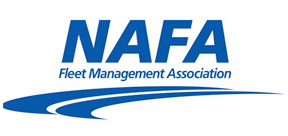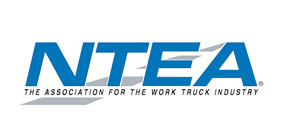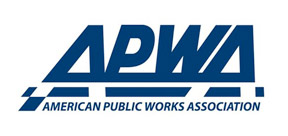Rapid City’s Vision Fund: Looking Ahead to Transformational Investments

After a week packed with presentations, public discussions and on-site evaluations, Rapid City’s Vision Fund Citizen Committee has concluded its public hearing process for the 2025-2029 Vision Fund cycle. Over the course of four days, 29 project applicants, ranging from youth athletic clubs to city departments and cultural organizations, made their case for a portion of the $12 million in capital funds allocated by the city council for community-driven initiatives.
Now, the real deliberation begins. The nine-member committee, composed of citizen volunteers appointed by the mayor, is tasked with a major responsibility: evaluating the long-term value, feasibility and impact of each project before submitting recommendations to the city council, expected in late May or early June.
This year’s funding round is part of a larger legacy that stretches back over 50 years, one rooted in both tragedy and transformation. According to Darrell Shoemaker, communications coordinator for the city of Rapid City, the origins of the Vision Fund trace back to the catastrophic June 9, 1972 flood, which claimed 238 lives and devastated the heart of the city.
“Incredibly, just months before that tragedy, the community had rallied around a proposal to build a new civic center, supported by a half-cent sales tax,” Shoemaker explained. “After the flood, people could have easily said, ‘Let’s set this aside.’ But the decision was made to move forward. That civic center, the one we know today as The Monument, is a symbol of how this city chooses resilience.”

It wasn’t until 1995, though, that the Vision Fund itself came into being. Voters again went to the ballot to dedicate a portion of Rapid City’s sales tax revenue toward large-scale capital projects that serve the public good. The fund is supported through a two-cent sales tax: one cent for the general fund and another penny for capital improvements, with 42% of that capital penny going directly to the Vision Fund.
“Every five years, a group of everyday citizens comes together to assess and recommend which projects should be funded,” Shoemaker said. “This kind of local democracy is what makes the Vision Fund special. It ensures that the people of Rapid City are shaping the future of Rapid City.”
Since its creation, the Vision Fund has supported 104 projects totaling over $212.7 million. The city is currently in its eighth cycle of funding. Noteworthy projects include the Canyon Lake Dam reconstruction, the ADA-compliant Summit Arena, upgrades to little league fields, and the construction of community gyms at South and West Middle Schools that serve both students and residents.
“This fund isn’t just about big-ticket items,” Shoemaker said. “We’ve helped fund everything from flagpoles at veterans’ organizations to facilities that support youth sports, culture and accessibility. It’s a wide range.”
This year, the city received 32 applications after putting out a public call for submissions. After a preliminary review, 29 proposals met eligibility criteria and moved forward. Those 29 projects collectively requested $74 million in funding, which is far more than the $12 million available.
“There’s always more need than there is funding,” Shoemaker acknowledged. “That’s part of the challenge and why the committee’s work is so important. They’re trying to strike a balance between community impact, financial responsibility and long-term benefit.”
The proposals run the gamut in scope and vision. On the large end, the Black Hills Sports Commission requested $10 million to support a regional sports complex. The Black Hills Rapids Soccer Club applied for $3.5 million to install synthetic turf and field lighting, while the Rushmore Swim Team asked for $2.6 million to enclose the city’s only 50-meter pool, located at the Roosevelt Swim Center.
Public agencies also submitted high-impact proposals. Public works seeks $8 million to revamp its Streets and Maintenance Campus, while parks and recreation submitted multiple requests totaling over $20 million to upgrade playgrounds, restrooms, irrigation systems and trailheads across the city.
On the public safety side, the fire department submitted three proposals totaling $6.75 million, including one for a new station and another for a training center. A joint proposal from the fire and police departments asks for $3 million to create a cold storage facility that could serve both evidence storage and emergency operations.
Cultural and grassroots organizations also made strong showings. Storybook Island, a beloved Rapid City attraction, is requesting $1.2 million to build a multipurpose facility for events and educational programming. The Journey Museum submitted a proposal for $400,000 to support an expansion and help seed a long-term endowment.
Some smaller but innovative requests include a $172,000 proposal from the Rapid Creek Recreation Corridor to create an in-stream recreational space within the city’s core and a $1.4 million request from the Black Hills Area Habitat for Humanity for a first-time land trust initiative aimed at increasing access to affordable housing.

While the committee has just completed its site visits and public presentations, they still face weeks of deliberation before finalizing recommendations. “We’re on a better timetable this year,” Shoemaker noted. “The first meeting was held in March, and we’ve now completed all site visits. The next few weeks will be critical.”
Each of the 29 applicants had 20 minutes to present their projects and answer questions from the committee during public hearings held April 22-25 at city hall. These sessions were open to the public and are now available online for those who want to follow along.
The committee itself reflects a cross-section of the community. “We encourage residents to stay informed and participate in this process,” said Shoemaker. “The Vision Fund is your fund. It’s built by your tax dollars, and it’s meant to reflect your priorities.”
One consistent challenge facing the committee is determining how to equitably distribute limited funds while still supporting projects that can deliver wide community benefit. “There’s no easy answer,” Shoemaker admitted. “But the process is built on transparency and accountability. It’s not about flashy presentations. It’s about long-term community impact.”
Some of the Vision Fund is still allocated to paying down the city’s investment in the Summit Arena, and Shoemaker noted that the council may also choose to earmark a portion for economic development initiatives, adding another layer of complexity to the committee’s recommendation process.
Still, for Shoemaker, the Vision Fund is an enduring symbol of what can be achieved when a community invests in itself. “The Vision Fund is about transformation,” he said. “Whether it’s a new playground in a neighborhood or a regional facility that brings people to Rapid City, these projects define who we are and who we want to become.”
City officials expect the committee’s recommendations to be presented in late May or early June, followed by city council review and approval in the following months. For more information on the Vision Fund, visit www.rcgov.org or contact the mayor’s office at (605) 394-4110.
Next Article: Roseville electric utility director doesn’t take power for granted




